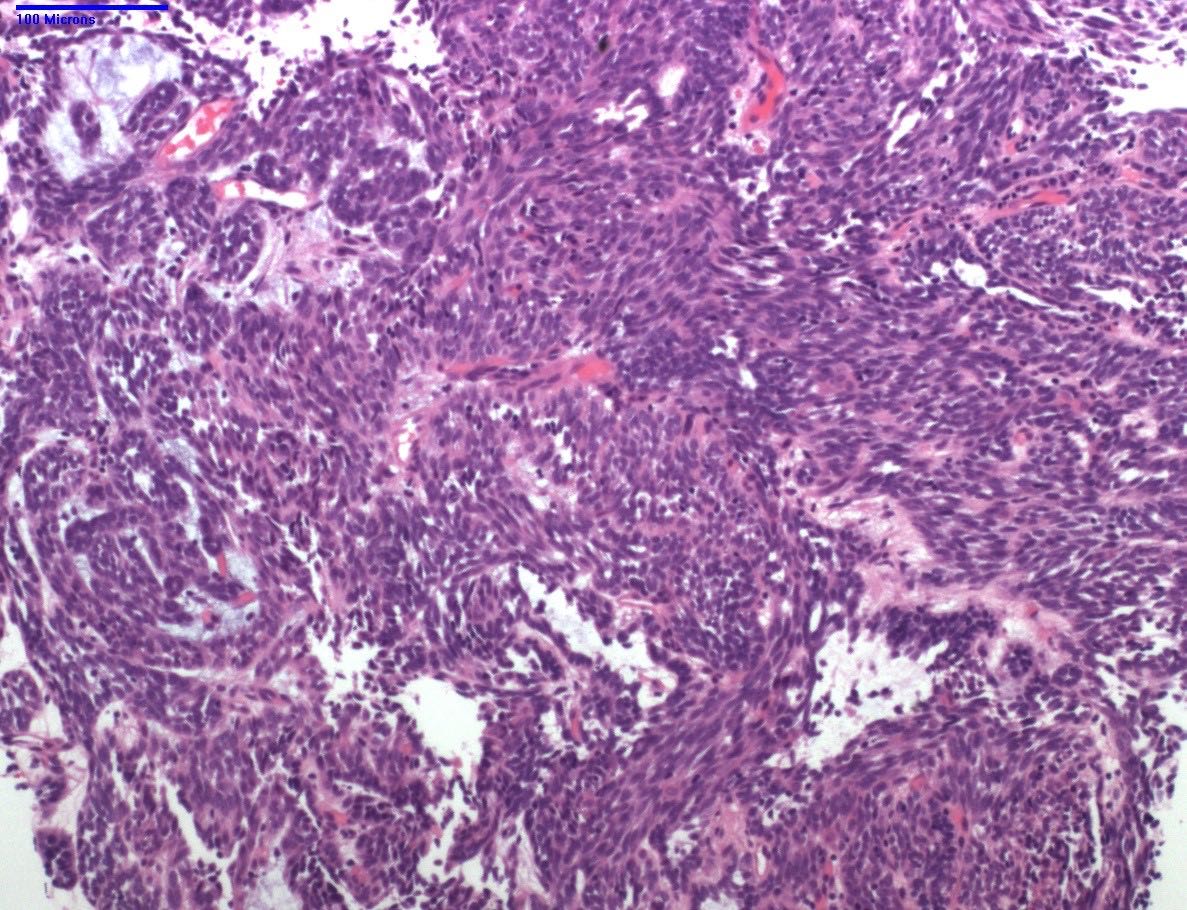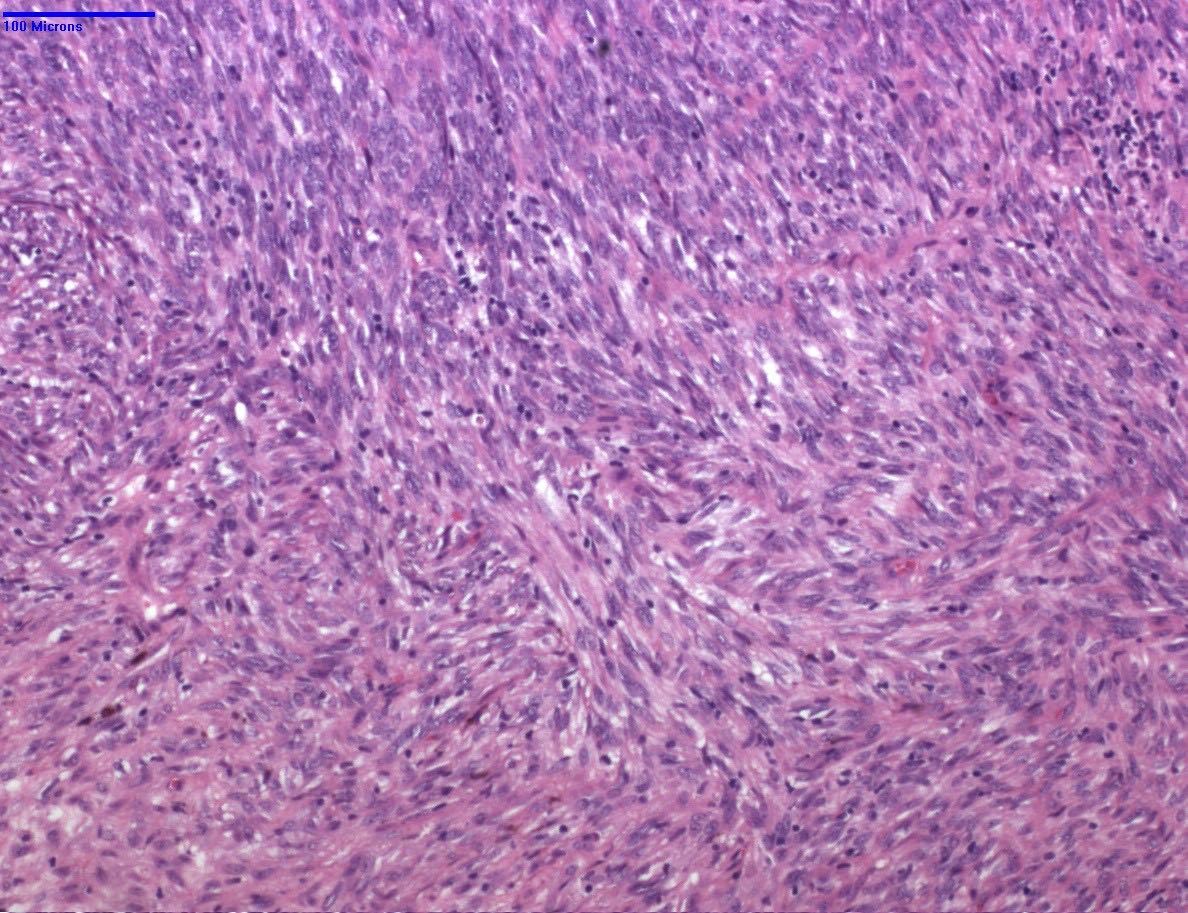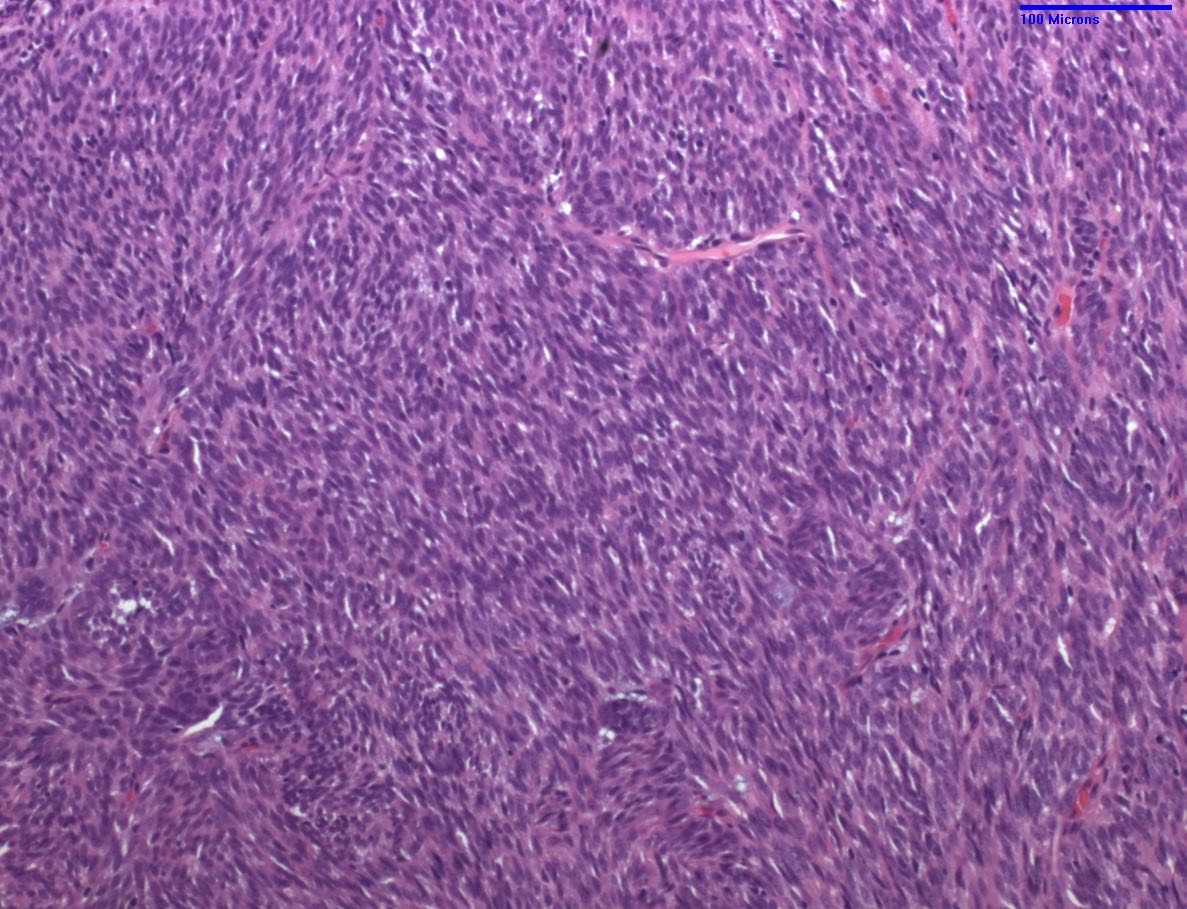Case History
26-year-old man presents with pericardial, right atrial and ventricular masses.
Past medical history was positive for a mediastinal tumor resected 6 years prior followed by radiotherapy. He had several mediastinal and pericardial relapses, treated surgically.
Immunohistochemistry of this biphasic tumor showed diffuse and strong expression of pan-cytokeratin (AE1/AE3), CK5/6 and p63 in the spindle and glandular cells. D2-40 was patchy and focally strong and MOC-31 and EMA showed focal and weak expression. Nuclear INI-expression was retained. Negative markers included CK7, CK20, calcitonin, calretinin, mesothelin, WT1, CD5, CD34, STAT-6, S100, myogenin, C-KIT (CD117), alpha-fetoprotein, placental alkaline phosphatase (PLAP) and glypican-3. The admixed lymphocytes did not express TdT.
No genomic alterations were found that matched with Strata affiliated clinical trial. Two pathogenic variants in KMT2D gene were seen.



What is the diagnosis?
A. Immature teratoma
B. Sinovial sarcoma
C. Thymoma
D. Spindle epithelial tumor with thymus-like differentiation
Answer: D. Spindle epithelial tumor with thymus-like differentiation
Discussion
Spindle epithelial tumor with thymus-like differentiation (SETTLE) is a rare, biphasic malignant tumor consisting of a mixture of spindle cells predominating over an epithelial component, found in the thyroid, neck and upper mediastinum which typically occurs in young patients and has a propensity for late metastasis. When in the thyroid, it is often misdiagnosed as spindle cell medullary carcinoma or papillary thyroid carcinoma. Cytology shows variable cytological features. Likewise, molecular studies are non-contributory. Immunohistochemistry is key to establish the right diagnosis.
Histology showing blue spindle cells often with focal prominent clefts, growing in fascicles, with reticular, pseudopapillary, and glandular architecture should prompt immunohistochemistry. This case showed typical IHC for this tumor. In addition, P40, P63 and CD99 have also been reported to be positive. Thyroglobulin is negative in thyroid SETTLE as are chromogranin and Bcl-2.
A paper that included Drs. Stevens, Morlote, Harada and Prieto-Granada from UAB published the first next-generation study of several cases of this entity and described a previously unreported KMT2D mutation. Case #1 from that paper is this case that unfortunately recently presented with right atrial and ventricular metastasis in addition to pericardial masses.
References
1. Stevens TM, Morlote D et al.: Spindle epithelial tumor with thymus-like differentiation (SETTLE): A next-generation sequencing study. https://doi.org/10.1007/s12105-018-0927-1
2. Kathamuthu K, Janardan C et al: Spindle epithelial tumor with thymus-like differentiation (SETTLE) misdiagnosed as papillary thyroid carcinoma. DOI 107759/cureus.31574
Case contributed by: Silvio Litovsky, M.D., Professor, Anatomic Pathology, Cardiovascular Section Head, UAB Pathology